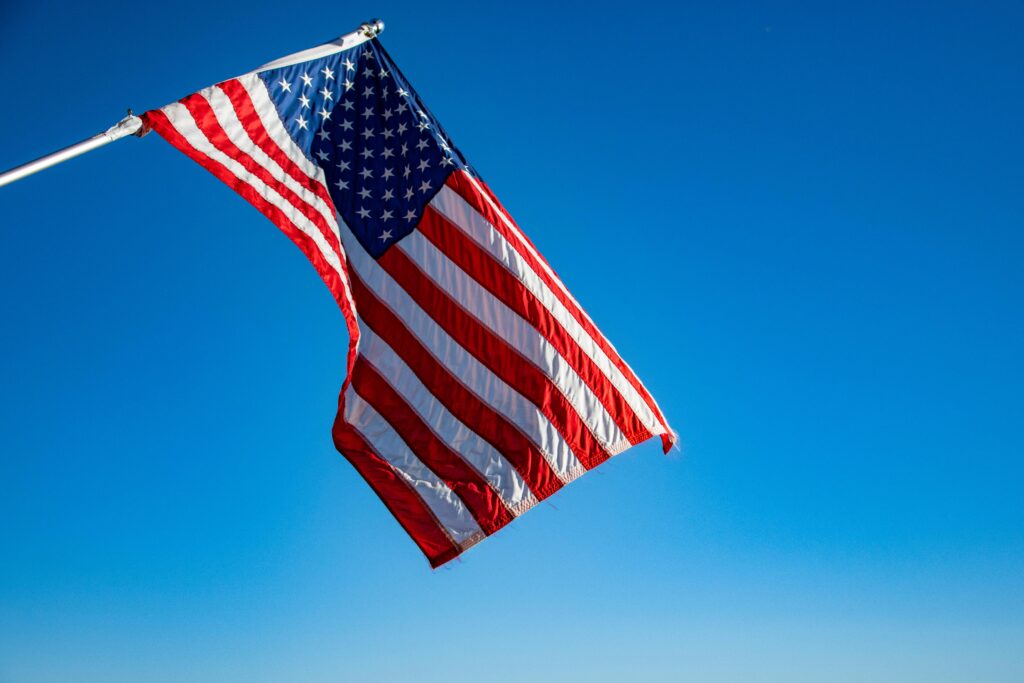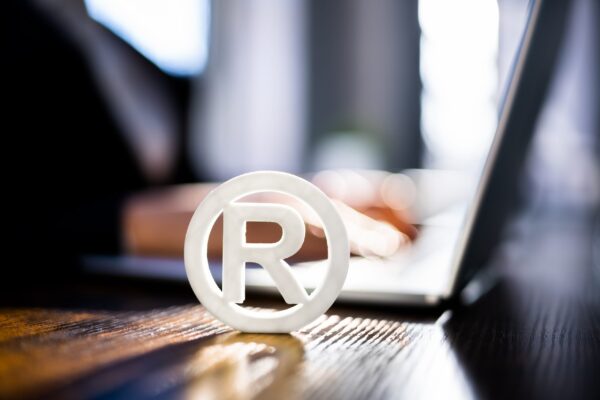When it comes to invention and innovation, the United States consistently stands out as a global leader. With its rich history of groundbreaking advancements and a forward-thinking entrepreneurial ecosystem, the U.S. offers an unmatched environment for those driven by creativity and invention. But what exactly sets the United States apart, making it the ideal destination for inventors from around the globe?
From robust intellectual property protection to access to funding and resources, here’s why the U.S. is widely considered the best place to be as an inventor.
Strong Intellectual Property Protection
One of the biggest advantages of inventing in the U.S. is its substantial intellectual property (IP) laws. The U.S. is a frontrunner in IP protection, ensuring inventors have legal ownership of their creations, from patents to trademarks. The United States Patent and Trademark Office (USPTO) is one of the most efficient systems globally, registering over 700,000 new patent applications annually.
Why does this matter? It offers inventors peace of mind. Once your invention is patented, you can focus on innovation without fearing that your ideas will be stolen or misused. This commitment to safeguarding intellectual property has made the U.S. a powerhouse on the Global Innovation Index, fostering an inventor-friendly environment for decades.
Furthermore, inventions patented in the U.S. benefit from international treaties, enabling inventors to secure protection worldwide. This legal infrastructure makes the U.S. the go-to place for inventors aiming to scale their innovations globally.

Funding and Investment Opportunities
The United States is known for unparalleled access to funding opportunities for inventors and entrepreneurs. Whether through venture capital firms, angel investors, or government grants, inventors in the U.S. can secure the resources necessary to bring their ideas to life and sustain their growth.
Venture capital in the U.S. surpasses $300 billion annually, supporting the scientific research behind innovative sectors such as artificial intelligence, biotechnology, and clean energy. Take, for example, the Small Business Innovation Research (SBIR) program, which provides federally-backed grants specifically to support invention-based businesses.
But it’s not just about the money—it’s about productivity. Studies show that U.S. workers are more productive than those in countries like Canada, as highlighted in recent research by Statistics Canada. This productivity is fueled by investments in technological advancements and competitive industries like information technology, where the U.S. grows at nearly quadruple the rate of its northern neighbor.
This thriving investment landscape means you’re not just entering a country with abundant financial resources; but stepping into a country’s economy built to maximize your innovations’ impact.
Thriving Entrepreneurial Ecosystem
The U.S. is well-known for its culture of innovation. Here, risk-taking is celebrated, and competition is encouraged. In contrast, while the United Kingdom boasts a rich history of ingenuity and invention, it often faces roadblocks that can hinder one\’s entrepreneurial spirit compared to the United States. One of the key differences lies in societal attitudes towards ambition and success. In the U.S., “getting ahead in life” is not just accepted—it’s celebrated. Risk-taking, ambition, and self-promotion are embedded into the national culture, creating an environment where striving for success is encouraged at all levels of society.
By contrast, the UK can sometimes be constrained by a more conservative and tradition-bound outlook. Social mobility in Britain has often been criticized as stagnant, with a rigid class-based system that occasionally discourages individuals from aiming too far beyond their perceived place in society. While innovation and hard work are still valued, there can be a certain hesitancy towards openly pursuing ambitious goals, particularly compared to the U.S.’s boundless “American Dream” mentality. This societal disparity makes the U.S. a more nurturing environment for inventors who are driven to push boundaries and redefine their industries.
Government Protection and Support
The United States offers various tax benefits, making it an attractive destination for inventors and entrepreneurs. Provisions like the Research and Development (R&D) Tax Credit were designed to encourage innovation by reducing the tax burden on businesses engaged in qualifying research and development activities. This credit enables inventors to offset costs associated with design, experimentation, and production, freeing up resources to focus more on bringing groundbreaking ideas to market. Additionally, various states within the U.S. provide tax incentives, including reductions in income taxes and property tax exemptions for startups and tech-focused firms, further supporting the growth of inventive enterprises.
On top of tax advantages, inventors in the U.S. benefit from the guaranteed protection offered by the United States Patent and Trademark Office (USPTO). The USPTO ensures inventors retain exclusive rights to their creations for a specified period. This prevents unauthorized use or replication and enhances the marketability and value of patented innovations. With robust oversight and enforcement mechanisms, the USPTO provides inventors the legal confidence they need to commercialize their ideas successfully. For entrepreneurs aiming to scale their ventures, this combination of financial incentives and airtight intellectual property protections creates an unparalleled environment for achieving success.

Access to Talent and Resources
Behind every successful invention is a team of skilled professionals and a wealth of resources. Thanks to its prestigious world-renowned universities like MIT, Stanford, and Caltech the U.S. boasts access to some of the world’s brightest minds. These institutions produce talented graduates and foster cutting-edge research and development initiatives, creating a constant cycle of growth and innovation.
The U.S. has some of the most advanced technological resources, from research labs to manufacturing facilities. Whether you need a prototype created or high-tech scalability solutions, you’ll find unmatched resources at your fingertips.
The significant influx of skilled immigrants also adds to the U.S. talent pool. With their diverse experiences and creativity, they make invaluable contributions to the country’s innovation performance.
Global Influence and Intellectual Property
One of the clearest indicators of the United States’ dominance in intellectual property (IP) is the global tendency for other countries to follow, replicate, or, in some cases, outright steal U.S. innovations. The U.S.’s leadership in technology, industrial processes, pharmaceuticals, and entertainment often sets the benchmark for global standards, making the United States ranked the best intellectual property country in the world. This influence can be seen in how many countries strive to adopt U.S.-style IP laws or align their systems to meet the standards established by American treaties and trade agreements.
However, this dominance also attracts less scrupulous actions, as some entities resort to IP theft to gain access to U.S.-developed technologies without the time or expense of developing their own. Countries with weaker IP enforcement mechanisms or differing approaches to IP governance are often highlighted as hotbeds for such activity. For instance, industries in nations like China and Russia have been implicated in significant cases of industrial espionage, targeting everything from software patents to medical research and defense technologies. Despite these challenges, the fact that U.S. IP is so highly valued—whether through imitation or infringement—underscores how integral it is to the global economy.
American IP dominance pushes competitors to chase its success while reinforcing the importance of robust protections for U.S. inventors. This global spotlight further emphasizes the United States as the epicenter of innovation and a leader in creating the ideas and advancements that shape the future. Entrepreneurs and inventors aligning themselves with the U.S. are protecting their creations and joining a powerhouse that sets the tone for worldwide progress.
Iconic American Inventors Who Revolutionized the World
The United States has been home to some of the most influential inventors in history, whose groundbreaking contributions have shaped modern society. These individuals exemplify the spirit of innovation that has become synonymous with America’s identity.
Thomas Edison
Known as one of the greatest inventors of all time, Thomas Edison earned over 1,000 patents throughout his career. He is best recognized for inventing the practical incandescent light bulb, the phonograph, and early motion picture technologies. His inventions transformed daily life and laid the groundwork for various industries that thrive today.
Nikola Tesla
A pioneer of electrical engineering, Nikola Tesla developed the alternating current (AC) electrical system, which remains the backbone of modern power distribution. His advancements in wireless communication and energy transmission were far ahead of his time, making him a visionary whose ideas continue to inspire technological exploration.
George Washington Carver
Celebrated for his contributions to agricultural science, George Washington Carver is best known for developing innovative uses for peanuts, sweet potatoes, and other crops. Beyond his practical inventions, his work revolutionized sustainable farming practices and offered ecological solutions that benefited future farmers.
Grace Hopper
A trailblazer in computer science, Grace Hopper was instrumental in developing early programming languages such as COBOL, which is still in use today. Known as “The Mother of Computing,” Grace Hopper also popularized the term “debugging” in computer programming and paved the way for advancements in modern computing technology.
Margaret Knight
Dubbed “The Female Edison,” Margaret Knight invented the machine that revolutionized the manufacturing of flat-bottomed paper bags, a design still in use today. She earned over 20 patents in her lifetime, breaking barriers for women in engineering and leaving a lasting impact on industrial manufacturing.
Other Influential Figures
The U.S. is also home to countless other inventors who have left their mark across various disciplines. Figures such as Alexander Graham Bell, the inventor of the telephone, and Samuel Morse, who developed the telegraph and Morse code, have significantly shaped communication. Innovators like Ruth Handler, the creator of the Barbie doll, and Steve Jobs, the co-founder of Apple and a leader in personal computing, continue to redefine their respective fields.
These inventors demonstrate the diversity and depth of American ingenuity, each contributing uniquely to the nation’s legacy of innovation. Their achievements inspire future creators to think boldly and push the boundaries of what is possible.

Why the U.S. Stays on Top
The U.S. innovation engine doesn’t rest on past achievements. It’s driven by a blend of strong intellectual property protection, an investor-friendly culture, and access to top-tier talent and resources. This creates a favorable environment for inventors to take risks, secure funding, and develop revolutionary ideas.
The federal government continues to strengthen this ecosystem, ensuring inventors have the tools to push boundaries in sectors like tech, government, and cultural industries.
Key Takeaway
The United States is more than just a hub for innovation; it’s a launchpad for ideas that can power to transform the world. If you’ve got an idea or invention you’re ready to bring to life, the opportunities in the U.S. are endless. With the resources, funding, and protections in place, inventors can focus on what matters most—inventing.
Interested in seeing how the U.S. can help turn your idea into reality? Explore opportunities through the World Intellectual Property Organization or connect with local investor networks to get started.
Looking to Patent an Invention?
Please contact Arlen Olsen at Schmeiser, Olsen & Watts LLP at aolsen@iplawusa.com.
About the Author

Mr. Olsen, a former adjunct professor of intellectual property law, has over 25 years of experience in all aspects of intellectual property law. Mr. Olsen is a founding Partner of Schmeiser, Olsen & Watts LLP and a former United States Patent Examiner. Mr. Olsen has prosecuted numerous patents that have been litigated and received damages of over 60 million dollars. Additional activities include teaching seminars, appearing as a guest lecturer on intellectual property matters for corporations and educational institutions, and evaluating and consulting with clients regarding the scope, enforcement, and protection of intellectual property rights.



